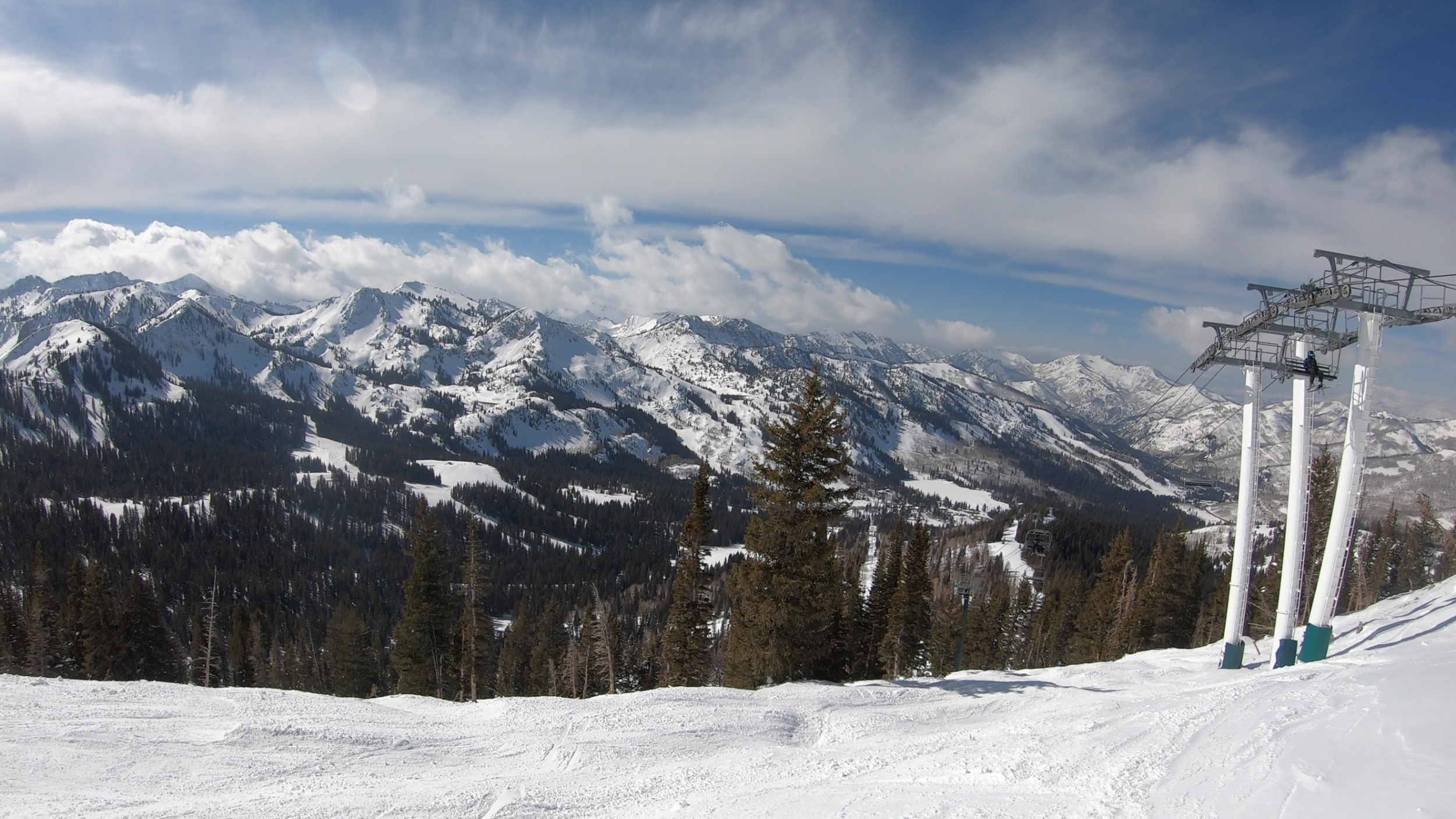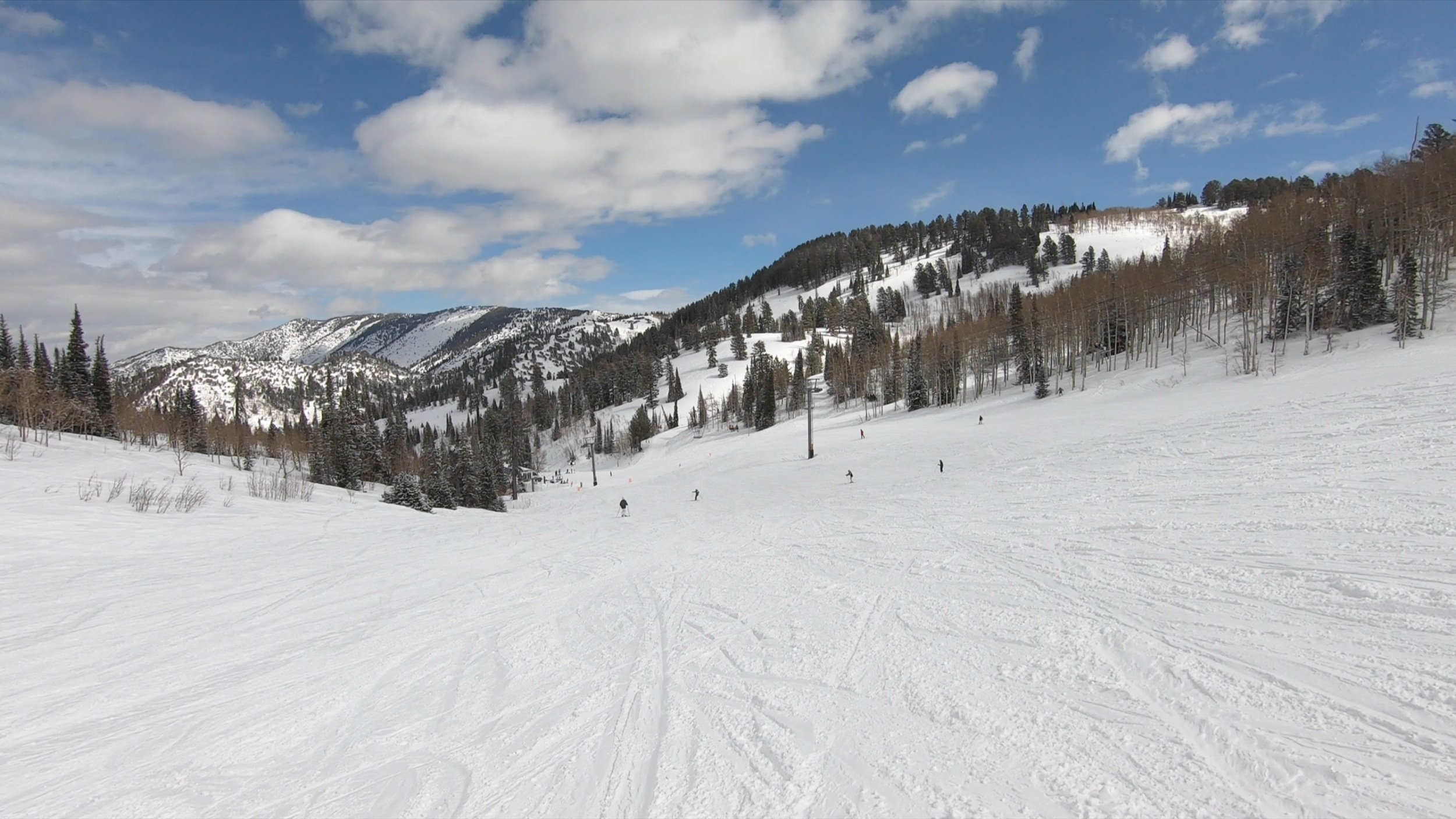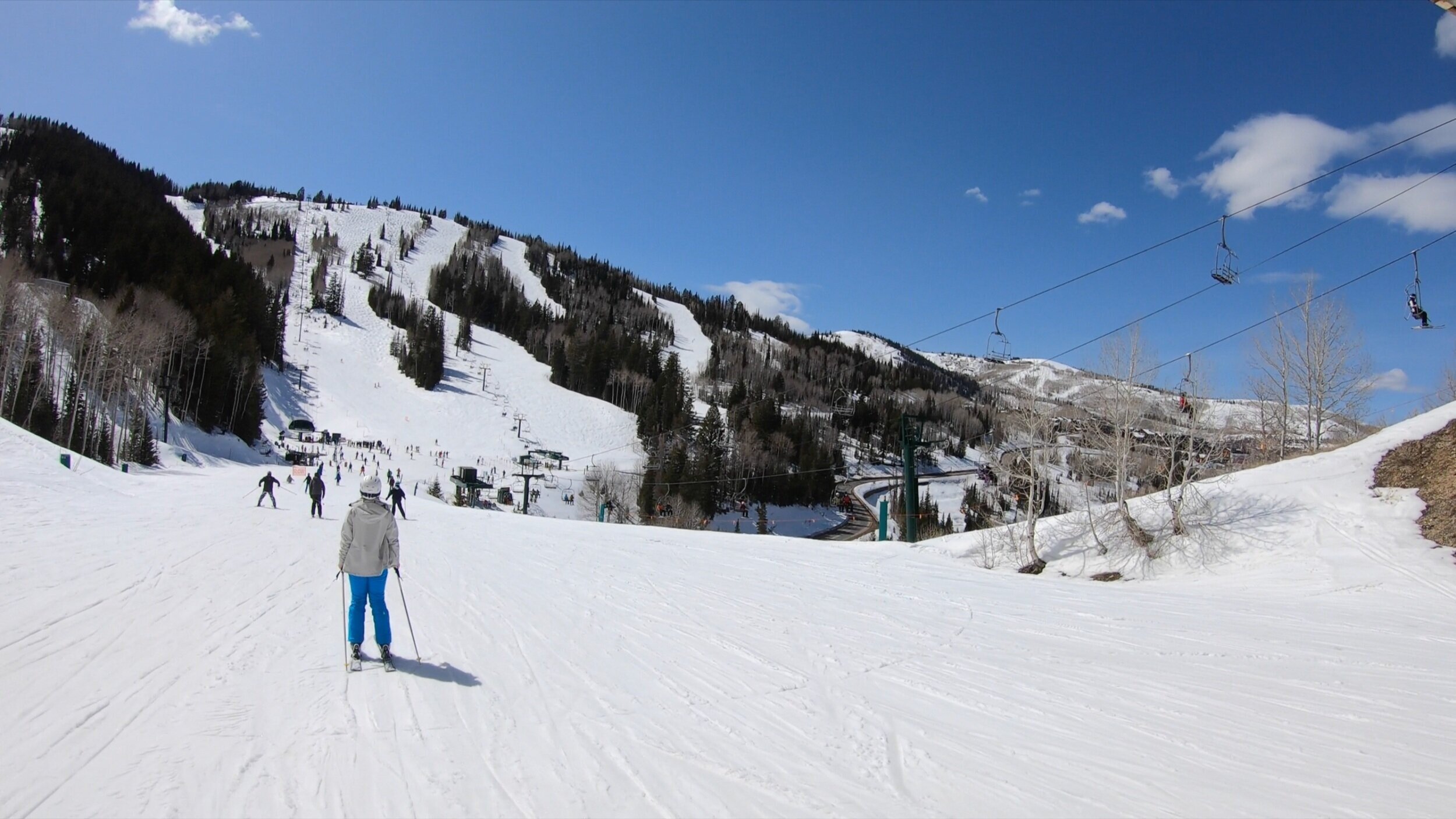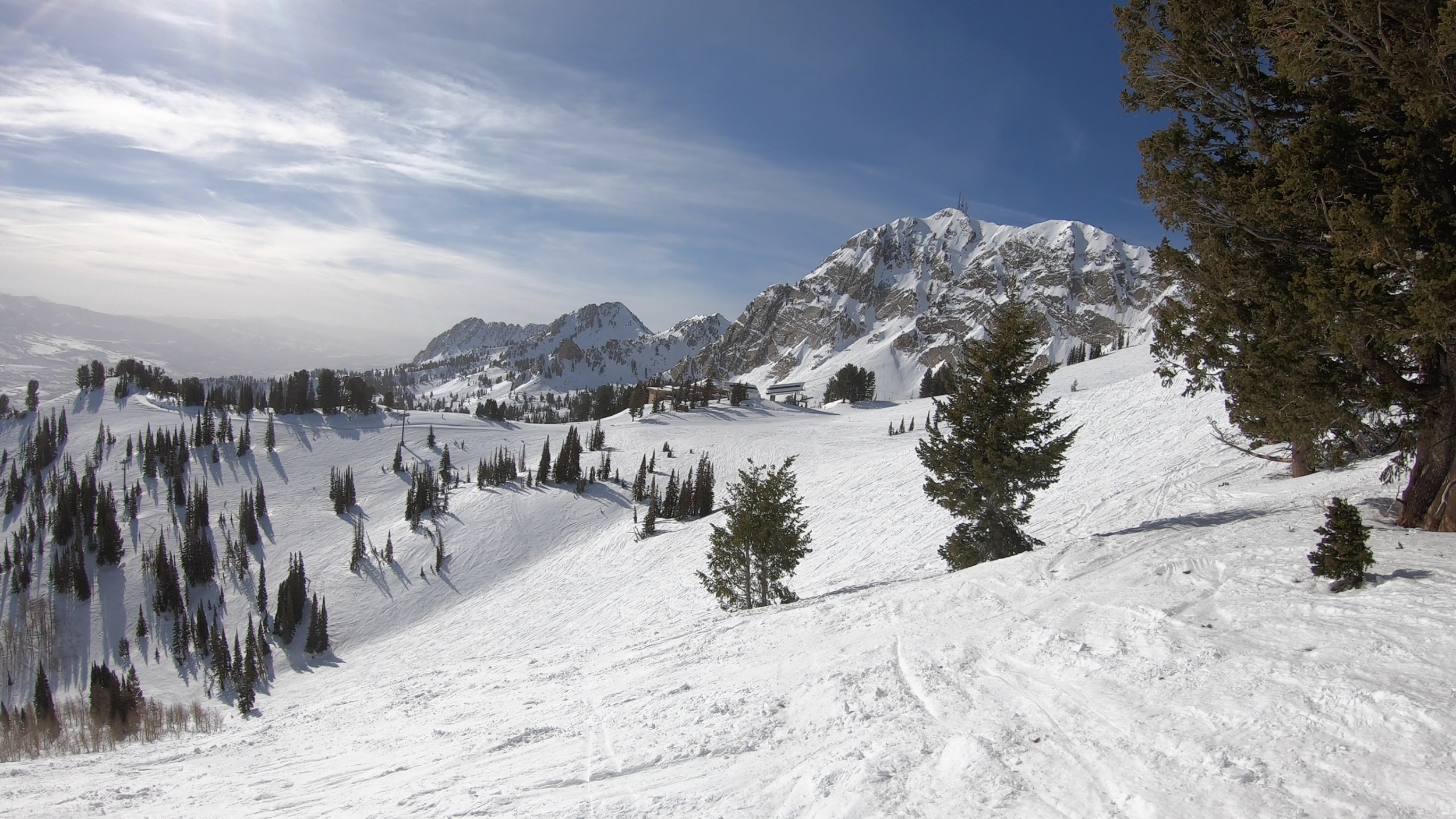Utah Ski Resorts Ranked: 2022-23
If you’re booking a fly-to ski trip, Utah might seem like the perfect destination. The state is home to some of the best resorts in the country, with reliable snowfall, incredible views, and footprints that dwarf your home hill. But Utah’s eight major destination ski resorts differ considerably in terms of overall mountain experience, and you might be wondering which ones are the best. In this article, we’ll rank the Utah ski resort destinations in order of their overall mountain experience, and we’ll highlight the strengths and weaknesses of each one.
Before we jump in, we’ll caveat that the bottom five resorts on this list all score incredibly closely, so it might be up to personal preference as to which is best for you and your group. And while some of the mountains on this list are clearly better than others, it’s worth noting that all these resorts are well-above-average as far as ski hills go. Enjoy!
#8: Brighton
Snowboarding Allowed: Yes
Coming in at the bottom of this list is Brighton, which rates quite closely to its next two competitors but falls behind due to a couple of factors. Brighton stands out thanks to exceptional snowfall totals throughout the season, and it has one of the most reliable footprints out there, often opening in its entirety by late December. The resort also has solid terrain for all abilities, with both a family-friendly vibe and some daunting steeps, and high-speed lifts in every mountain area. The mountain especially stands out in its glades and terrain park setups.
But Brighton is quite a bit smaller than its other competitors—with only 890 skiable acres, it’s the only mountain with fewer than 1,000 acres on this list—and much of that discrepancy comes in the form of a short vertical drop, making for a lack of truly long runs. In addition, the resort’s lift system is just not well set up for crowd flow, resulting in a world where close-by mountain areas require multiple lift rides to travel between and mid-resort lifts have become major chokepoints. Annoying flat sections in some areas compound the problem, and make this modestly-sized mountain actually pretty frustrating to get around.
Brighton is still a great mountain, and it probably offers the best combination of family-friendly terrain and high-quality snow in the state. But it’s just not big enough to beat out the other mountains on this list. Brighton used to offer free lift tickets for kids under 10, but this benefit is now only valid for kids 6 and under. However, tickets remain fairly reasonable, still typically costing over $100 but undercutting most other competitors.
1-Day Ticket Range (Core Season):
Adult 13-64: $95-$159
Child 7-12: $63-$109
Senior 65+: $63-$109
Child 0-6: Free
#7: Solitude
Snowboarding Allowed: Yes
Coming in next on our list is Brighton’s neighbor Solitude, which is located just a bit further down Big Cottonwood Canyon. Solitude has a longer vertical drop than Brighton, and has some pretty gnarly expert terrain. The resort also sees excellent snowfall throughout the winter, although it’s not quite as good as the other Cottonwood mountains, and has some really striking canyons with unique landscapes throughout. And thanks to its tall, narrow layout, Solitude is easier to get around than its other Utah competitors.
But Solitude really isn’t for less-experienced guests, and beginner and low-intermediate terrain options are scarce. While Solitude is larger than Brighton at 1,200 acres, it’s still quite a bit smaller than other competitors. Nearly a quarter of terrain takes hiking to get to, reducing the practical size even further for those who want to stick to the lifts. And this very intense hike-to terrain can take months to open, making it a tough bet for December or even January.
Solitude has seen a major increase in traffic as the only unlimited Ikon Pass mountain in Utah, and its lift setup has not fared well against increased crowds in recent years. Multiple lifts—especially the Summit chair, which provides the only access to the upper half of the resort—have become serious chokepoints. The increased traffic has also put a strain on Solitude’s parking infrastructure, and the resort now charges for parking on a daily basis.
Solitude is a low-key expert’s haven, but the mountain just isn’t big or well-rounded enough to offer a best-in-class experience. Tickets prices undercut the destinations at the ticket window, but in-advance discounts are weaker, limiting the value proposition.
1-Day Ticket Range (Core Season):
Adult 13-64: $115-$159
Child 5-12: $63-$87
Senior 65+: $83-$115
Child 0-4: Free
#6: Powder Mountain
Snowboarding Allowed: Yes
Powder Mountain is one of the most unconventional mountains we’ve ever tried. Its upside down layout, massive footprint, and extremely limited ticket sales make for an unforgettable experience, let alone one where guests will never wait in lines (save if there’s a mechanical problem). Powder doesn’t receive the same snowfall totals as Cottonwoods competitors, but its very low visitation means that fresh snow takes days—or even weeks—to get tracked out. And while it might be big, Powder Mountain is a very family-friendly mountain, with plenty of enjoyable beginner and intermediate terrain to go around, including some truly excellent glade areas.
But Powder Mountain is not a plush resort destination by any stretch of the imagination, and it might feel a bit too bare-bones for some vacation-goers. First off, with the exception of one high-speed quad near the main base, every lift at the resort is slow, making for some fairly sluggish rides. There are no facilities outside the bases, meaning that from the furthest resort areas, it can take up to 20 minutes to reach the nearest lodge or bathroom. And while Powder claims to have the largest skiable footprint in North America at over 8,400 acres, only 5,200 of that is accessible in-bounds without a private tour guide—and only 2,900 of that is lift-served, meaning guests will have to either hike to or pay extra for a snowcat ride to access even the terrain that comes with a lift ticket.
In addition, Powder Mountain’s location diminishes some of the benefits from its lower traffic. At just 6,100 feet, Powder’s bottom elevation is the lowest on this list—and this both results in more freeze-thaw cycles than competitors and a diminished half-life of the untouched snow Powder is known for. Snowmaking is nonexistent, meaning that the resort lacks any resiliency measures to combat unfavorable weather patterns. The resort is a somewhat risky bet in the spring, and even as early as late March, key terrain can start to close.
Powder Mountain is unbeatable for its lack of crowds and sizable footprint, but there are just too many misses for the resort to compete with the larger destinations. Tickets are still somewhat pricey, but like at Brighton and Solitude, they undercut the better resorts on this list.
1-Day Ticket Range (Core Season):
Adult 19-64: $115-$140
Child 7-18: $69-$94
Senior 65-74: $87-$112
Child 0-6: Free
Senior 75+: Free
#5: Deer Valley
Snowboarding Allowed: No
Deer Valley is perhaps the most guest-service-oriented resort on this list, presenting itself as a comfortable vacation destination for those who want to be pampered on their next ski trip. While this is a skier’s only resort—snowboarding is not allowed—it does hospitality really well, offering complementary overnight ski storage and staff on-site to give directions and help you carry your skis from your car. There are also plenty of mid-mountain lodges with high quality, albeit expensive, dining options. On-mountain maintenance is superb, and guests will find fresh groomers ready for carve-up every single morning. And while it’s nowhere near as strict as Powder Mountain’s, Deer Valley does have a crowd-mitigating cap on ticket sales.
But while Deer Valley might be ranked the #1 mountain in some magazine surveys, it certainly isn’t on this list. The resort’s terrain really isn’t all that special, with very little in the way of bowl or expert terrain that other Rockies mountains do so well. And while other destination mountains offer beautiful, isolated slopes, Deer Valley feels built up and commercialized, with condo complexes located across large portions of the footprint, including in some upper-mountain areas. And Deer Valley’s snow isn’t even that special—the resort does see strong snow totals throughout the winter, but they’re nowhere near the accumulation numbers of the Cottonwoods. A lower elevation makes for variable lower-mountain conditions, and while snowmaking keeps trails skiable, it could be next to hills of dirt. And finally, Deer Valley has a very weird logistical setup, making it pretty annoying to get between mountain zones and resulting in chokepoints that diminish some of the effects of its ticket cap.
The Deer Valley experience wouldn’t be so absurd if it weren’t for the ridiculous price tag. 1-day lift tickets cost over $200—even with in-advance purchases—and with a smaller, less unique, and more commercialized experience than other top-of-the-line competitors, it’s one of the worst value resorts we’ve ever been to. If you plan to stop by here, make sure you do so with an Ikon Pass, and take your lift ticket money elsewhere.
1-Day Ticket Range (Core Season):
Adult 13-64: $199-$259
Child 5-12: $123-$161
Senior 65+: $149-$194
Child 0-4: $48
#4: Park City
Snowboarding Allowed: Yes
Park City may have had some pretty highly publicized issues over the past couple of years, but it still manages a respectable 4th place on this list. Park City is the second largest ski resort in North America, at over 7,000 acres, and it has plenty of terrain for all ability levels. Park City is known for its terrain parks, and it has one of the best extra-large freestyle setups of any ski resort on the continent. In addition, Park City is home to the only truly lively ski town in Utah, whereas other ski resort towns and villages have very little going on.
But while it may have more of it, Park City’s terrain just isn’t as special as competitors in some regards. Bowl terrain is quite limited, and lift-serviced expert trails aren’t as hard as those at competing mountains. Park City has over 40 lifts, but some of them are outdated, with slow, fixed-grip chairs in a number of mountain areas. And Park City is just about the most frustrating ski resort to get around we’ve ever tried; the resort’s lethal combination of exceptional wideness and indirect lift placement means it takes multiple lift rides to get between major mountain areas. Some of these problems can be attributed to the fact that it’s really two former resorts—Park City and Canyons—that were connected by gondola in 2015, rather than a single, massive mountain.
But while the preceding problems already put Park City at a disadvantage compared to the better resorts on this list, the resort faced a number of challenges last year that degraded the experience. Crowds increased immensely, putting a strain on the resort’s already less-than-perfect lift setup and resulting in some serious chokepoints. The resort also lagged considerably behind in snowmaking and restaurant operations last season, and while we wouldn’t be surprised if these opportunities are addressed by changes to staffing policies, it looks like the long lines are here to stay.
Park City starts out with the largest skiable footprint of this bunch, but it just doesn’t have the snow quality, terrain, or logistical setup to compete with the other mountains on this list. Park City lift tickets are now nearly as absurd as Deer Valley’s, with both resorts having 1-day prices that top out at $259. Much more reasonable Epic Day Pass products are no longer on sale as of early December.
1-Day Ticket Range (Core Season):
Adult 13-64: $182-$259
Child 5-12: $116-$166
Senior 65+: $126-$179
Child 0-4: Free
#3: Snowbasin
Snowboarding Allowed: Yes
Snowbasin isn’t quite as well known as some of the other mountains on this list, but several facets make it a really competitive package. The resort especially stands out with the nicest facilities of any resort we’ve ever been to, with ultra-luxury lodges, both at the base and on-mountain, that afford amazing views and make you feel like royalty. Snowbasin also features a striking, peak-lined footprint, plenty of advanced and expert terrain, and what might be the best groomed bowl terrain in Utah in its Strawberry zone. The resort isn’t quite as crowded as some competitors, and recent lift improvements have made it easier to lap key mountain areas.
But like the other non-Cottonwoods Utah resorts, Snowbasin is at a lower elevation than most of the major Rockies competition and doesn’t get quite as much snow as the best mountains in the state. In addition, while Snowbasin’s intermediate and advanced terrain is very impressive, its beginner footprint is notably limited, with basically nothing outside a handful of lower-mountain areas. A big Snowbasin downside is that the resort lacks on-site lodging entirely, making it difficult to plan a true destination vacation around.
Snowbasin is the odd ball of the Utah ski resort scene—it’s way better than all the mountains ranked below it, but it’s not as good as the final two mountains on this list. Lift tickets are on the pricier side, but they’re nowhere near as outrageous as Park City and Deer Valley’s, and depending on who you are, they might be worth it.
1-Day Ticket Range (Core Season):
Adult 13-64: $135-$195
Child 5-12: $85-$145
Senior 65+: $105-$165
Child 0-4: Free
#2: Snowbird
Snowboarding Allowed: Yes
Snowbird has a number of traits that make it one of the most competitive ski resorts out there. The mountain enjoys top-tier snowfall, regularly receiving well over 500 inches of perfectly light and dry accumulation per season, making for plenty of effortless powder days. While on the difficult side, the resort’s slopes are well-rounded, with a mix of all terrain types and fantastic natural scenery throughout the resort. The resort also has an amazing magic carpet ski tunnel that cuts right through the mountain—it’s the only one of its kind in North America.
Snowbird arguably offers the most extreme terrain in Utah, with multiple lines right off the lifts that require mandatory straightlining or cliff drops. And if you’re looking for late season skiing, Snowbird is the place to be in the spring—the resort almost always has the longest season in the state, often staying open until May, and sometimes going as late as July.
But Snowbird isn’t for everyone. The beginner experience is an afterthought, with the resort offering barely any green terrain and all beginner options congregated in the lowest resort areas. All the lifts serving green terrain are doubles, so most families with beginners won’t even be able to ride together. The mountain also isn’t the most ideal for low intermediates, with most frontside blue runs being traverses, some of which can get way too slim and crowded for comfort during peak times. And like a lot of the other resorts on this list, on-site lodging is limited, with only a handful of hotels near the base; if you don’t book early enough during popular times, they might be sold out. Snowbird isn’t immune to crowds, and certain areas can become chokepoints during busy days.
But overall, Snowbird offers an incredibly compelling combination of snow quality, terrain diversity, and innovative mountain logistics that’s tough to beat. Tickets are definitely on the expensive side, but if you’re a tenured skier or rider, the experience may well be worth it. The resort just barely falls behind the best mountain on this list, and if you’re familiar with Little Cottonwood Canyon, you probably already know what it is.
1-Day Ticket Range (Core Season):
Adult 13-64: $142-$196
Child 7-12: $85-$118
Senior 65+: $121-$167
Child 0-4: Free
#1: Alta
Snowboarding Allowed: No
That’s right, Alta is our highest-ranked ski resort in Utah. Well unless you’re a snowboarder—cause Alta is a skiers’ only mountain—but for everyone else, Alta is really hard to beat. The resort enjoys the best overall snow of any mountain we’ve ever tried, with both top-tier accumulation numbers and light, dry snow quality. If you’re looking for an enjoyable powder day, Alta is the place to find it. The resort is also about as consistent as it gets, with the closest thing to a sure bet conditions-wise you can find in North America. And while it’s certainly not the easiest mountain out there, the resort’s beginner offerings are much more reasonable than some competitors, and the resort’s intermediate to expert terrain offerings overall are incredibly well-rounded. Finally, Alta boasts a rare local feel for such a renowned resort, and when combined with the absolutely incredible scenery, it makes for one of the most incredible vibes of any North American ski resort.
Besides its ban on snowboarders, Alta’s biggest drawback is arguably its on-site lodging. The limited options that exist are incredibly expensive, with even most base rooms being outside the stretch of a typical budget. The cheapest lodging can be found in nearby Salt Lake City, but the access highway can get seriously backed up on weekends or holidays, and Alta now mandates paid parking reservations during these time.
Ticket prices are very comparable to Snowbird’s, meaning they’re not cheap. But when it comes to the overall mountain experience, Alta is tough to beat, and that’s why it earns the top spot on this list.
1-Day Ticket Range (Core Season):
Adult 13+: $135-$174
Child 0-12: $68-$87
Final Breakdown
So there you have it—that’s our official ranking of the destination ski resorts in the state of Utah! Here’s a full breakdown of the overall mountain scores for each resort, along with their valuations in each category. There’s a clear schism between the top two resorts and bottom five, and ultimately, choosing between these tiers will depend on whether you most highly value the overall mountain experience, nightlife options after a day on the slopes, or bang for your buck.
As a reminder, snowboarding is not allowed at Alta and Deer Valley. By default, this makes Snowbird the best resort in Utah for snowboarders.
How’d we do? Would you change the order? We’d love to hear from you, so if you have any thoughts, hit us with a comment below!
For more information on these resorts, check out our comprehensive Utah mountain reviews. If you’re interested in seeing how they compare to other similar mountains, check out our Rockies and overall rankings.









